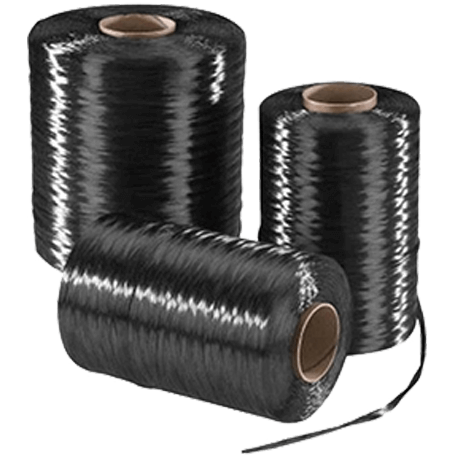Recycling Methods for Carbon Fiber Composites
-
 Your Composites Expert Carbon Fiber Materials&Products
Your Composites Expert Carbon Fiber Materials&Products -
-1.png?width=686&height=617) Your Composites Expert Aramid Fiber Materials&Products
Your Composites Expert Aramid Fiber Materials&Products -
 Your Composites Expert UHMWPE Materials&Products
Your Composites Expert UHMWPE Materials&Products -
 Your Composites Expert Fiberglass Materials&Products
Your Composites Expert Fiberglass Materials&Products -
 Your Composites ExpertPBO Materials&Products
Your Composites ExpertPBO Materials&Products -
 Your Composites Expert Basalt Materials&Products
Your Composites Expert Basalt Materials&Products
1. Introduction
Carbon fiber composites are widely used in industries such as aerospace, automotive, sports, and renewable energy due to their exceptional strength-to-weight ratio, stiffness, and durability. However, the widespread use of these materials has raised concerns about end-of-life waste management and environmental sustainability. Unlike metals, carbon fiber composites are difficult to recycle because of their complex structures and strong polymer matrices.
Recycling carbon fiber composites is crucial for reducing environmental impact, conserving resources, and making the production process more sustainable. This article explores the various recycling methods, challenges, and future directions for carbon fiber composite recycling.
2. Why Recycling Carbon Fiber Composites is Important
The importance of recycling carbon fiber composites stems from multiple factors:
- Environmental Sustainability: Disposing of composites in landfills creates long-lasting waste due to their resistance to natural degradation.
- Resource Conservation: Producing virgin carbon fiber is energy-intensive. Recycling helps reduce the demand for new raw materials.
- Economic Benefits: Recycled carbon fibers are cheaper than virgin fibers, lowering production costs.
- Waste Reduction: With the growing use of composites, effective recycling minimizes industrial and consumer waste.
- Regulatory Compliance: Stricter environmental regulations necessitate sustainable waste management practices.
3. Challenges in Recycling Carbon Fiber Composites
Recycling carbon fiber composites presents several challenges:
- Complex Material Structure: The combination of fibers and resins complicates separation.
- Quality of Recycled Fiber: Recycled carbon fibers often lose some mechanical properties.
- High Processing Costs: Recycling processes can be expensive and energy-intensive.
- Lack of Infrastructure: Limited facilities dedicated to composite recycling.
- Variety of Resin Types: Different resins (e.g., thermoset and thermoplastic) require distinct recycling methods.
Despite these challenges, advancements in recycling technologies offer promising solutions.
4. Current Recycling Techniques for Carbon Fiber Composites
1. Mechanical Recycling
Overview: Mechanical recycling involves physically breaking down the composite materials into smaller pieces or fibers.
Process:
- Shredding or Milling: The composite is shredded into small flakes or powders.
- Sieving and Sorting: Separated into fiber-rich and resin-rich fractions.
Advantages:
- Low cost and straightforward process.
- Suitable for thermoplastic-based composites.
Disadvantages:
- Shortens fiber length, reducing mechanical properties.
- Limited applications for high-performance uses.
2. Thermal Recycling (Pyrolysis)
Overview: Pyrolysis involves heating the composite in an oxygen-free environment to break down the resin, leaving the carbon fibers intact.
Process:
- Heating: The material is heated to temperatures between 400°C and 700°C.
- Resin Decomposition: The resin decomposes into gases and liquids.
- Fiber Recovery: The remaining carbon fibers are collected.
Advantages:
- Produces high-quality fibers with minimal damage.
- Scalable for industrial applications.
Disadvantages:
- Energy-intensive process.
- Emission of harmful gases requires careful handling.
3. Solvolysis (Chemical Recycling)
Overview: Solvolysis uses chemical solvents to break down the resin matrix while preserving the carbon fibers.
Process:
- Immersion: The composite is immersed in a solvent (e.g., acids, alcohols).
- Chemical Reaction: The resin dissolves or degrades.
- Fiber Separation: The fibers are filtered and cleaned.
Advantages:
- Produces high-quality recycled fibers.
- Can be conducted at lower temperatures than pyrolysis.
Disadvantages:
- Use of hazardous chemicals.
- Complex and time-consuming process.
4. Fluidized Bed Process
Overview: In the fluidized bed process, composites are processed in a high-temperature air bed, breaking down the resin.
Process:
- Pre-Shredding: The composite is shredded into small pieces.
- Heating: The pieces are introduced into a fluidized bed at 450°C to 550°C.
- Resin Removal: The resin burns off, and the fibers are recovered.
Advantages:
- Effective for large-scale recycling.
- Produces clean, high-quality fibers.
Disadvantages:
- Energy-intensive.
- Potential fiber length reduction.
5. Microwave-Assisted Pyrolysis
Overview: This method uses microwave energy to heat the composite uniformly, decomposing the resin.
Process:
- Microwave Heating: The composite is exposed to microwaves, generating internal heat.
- Resin Decomposition: The resin breaks down while fibers are preserved.
Advantages:
- Faster heating compared to conventional pyrolysis.
- Lower energy consumption.
Disadvantages:
- Requires specialized equipment.
- Limited commercial adoption.
6. Supercritical Fluid Recycling
Overview: Uses supercritical fluids (e.g., supercritical CO₂) to break down the resin matrix.
Process:
- High-Pressure Environment: The composite is exposed to supercritical fluids under high pressure and temperature.
- Resin Dissolution: The fluid penetrates and breaks down the resin.
- Fiber Recovery: The fibers are separated and cleaned.
Advantages:
- Environmentally friendly with minimal emissions.
- High-quality fiber recovery.
Disadvantages:
- High cost and complex equipment.
- Limited scalability.
5. Comparison of Recycling Methods
| Method | Fiber Quality | Cost | Scalability | Environmental Impact |
|---|---|---|---|---|
| Mechanical Recycling | Low | Low | High | Low |
| Pyrolysis | High | Medium-High | High | Moderate |
| Solvolysis | High | High | Medium | Moderate |
| Fluidized Bed Process | Medium-High | Medium | High | Moderate |
| Microwave Pyrolysis | High | Medium | Low-Medium | Low |
| Supercritical Fluid | High | High | Low | Low |
6. Applications of Recycled Carbon Fiber
Recycled carbon fiber can be used in:
- Automotive Parts: Interior panels, reinforcement structures.
- Aerospace Components: Secondary structures and interior components.
- Sports Equipment: Bicycles, tennis rackets, and golf clubs.
- Construction Materials: Reinforcements for concrete and composites.
- Electronics: Lightweight casings and components.
7. Innovative and Emerging Technologies
Future advancements include:
- AI and Automation: Optimizing recycling processes.
- Nanotechnology: Improving fiber properties during recycling.
- Hybrid Recycling Methods: Combining mechanical and chemical techniques.
- Sustainable Solvents: Eco-friendly chemicals for solvolysis.
8. Environmental and Economic Impact
Recycling carbon fiber composites reduces landfill waste, conserves resources, and supports a circular economy. Although initial investments are high, long-term savings and regulatory compliance make recycling economically viable.
9. Future Trends and Opportunities
- Increased Demand: More industries adopting recycled fibers.
- Government Policies: Stricter recycling mandates.
- Technological Innovation: Efficient and cost-effective processes.
10. Conclusion
Recycling carbon fiber composites is essential for sustainability. Continued advancements will improve processes, making them more efficient and accessible.












